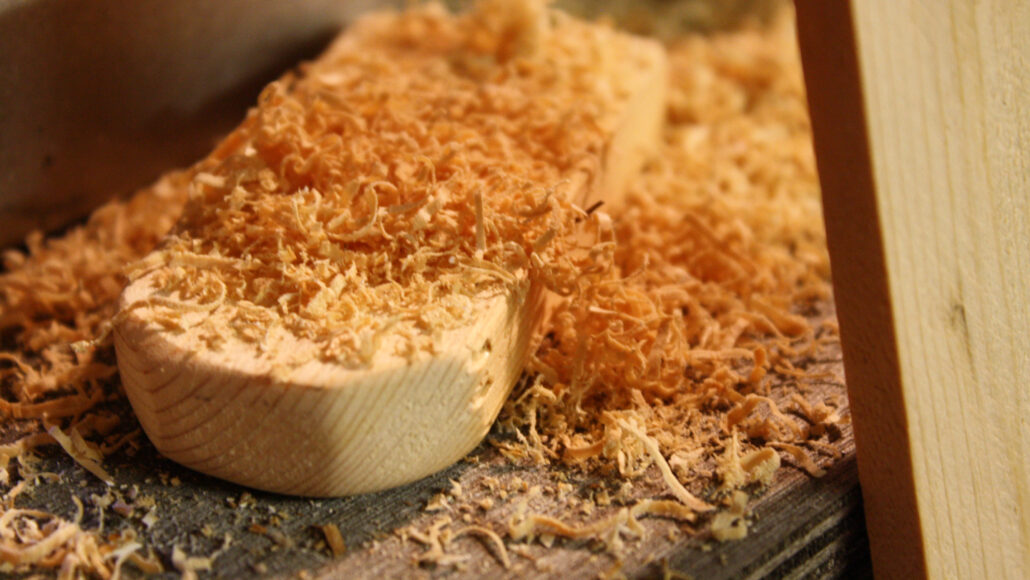A disinfectant made from sawdust knocks out deadly microbes
Wood wastes could make for greener cleaning products than the chemicals used today

Some disinfectants rely on a chemical called phenol or similar compounds to kill germs. Sawdust waste may provide a greener source of these substances.
jypsygen/flickr (CC BY-NC-ND 2.0)
A new disinfectant made from sawdust and water can knock out more than 99 percent of some disease-causing microbes. That makes the sawdust mix a potential alternative to current germ-killing chemicals.
Many disinfectants used today can harm the environment. Take bleach and other chlorine-containing chemicals. They form toxic by-products when they get washed down the drain. Some potentially greener disinfectants exist. They rely on a chemical called “phenol” or similar compounds. But these cleaners can be costly and take a lot of energy to make.
Shicheng Zhang went searching for a better option. He’s an environmental engineer at Fudan University. It’s in Shanghai, China. Wood contains many molecules that look like phenol. They’re part of the large, branching molecules that make up plant cell walls. So Zhang wondered if microbe-killing chemicals could be extracted from sawdust through a low-cost, low-energy process.
He and his colleagues cooked mixtures of water and sawdust for one hour. They heated this sawdust soup under pressure, then filtered it. Later, they tested how well the sawdust brew killed off microbes.
This liquid wiped out E. coli bacteria — microbes that can cause food poisoning. The sawdust brew also killed anthrax bacteria. These microbes cause dangerous infections. What’s more, the disinfectant stopped flu viruses from being infectious.
The researchers also added different amounts of water to the sawdust soup. That let them test how concentrated it had to be to knock out germs. Depending on its concentration, the mix could zap more than 99 percent of the microbes.
The new findings appear in the January 10 Proceedings of the National Academy of Sciences.
Satinder Brar and Rama Pulicharla see a couple of benefits for the new disinfectant. These environmental engineers, who did not take part in the study, both work at York University in Toronto, Canada. One perk, they say, is that the sawdust mix costs little to make. Also, it has a simple recipe. No extra chemicals must be added to the sawdust and water.
How the sawdust mix slays germs
Zhang’s team inspected the sawdust soup’s chemistry. It contains lots of phenol-like compounds. These likely snapped off big branching molecules in the wood’s cell walls. Pressure cooking the sawdust likely broke the wood’s molecular chains. That could have freed up microbe-killing molecules.
Peering at slain germs under a microscope revealed some of the ways the sawdust mix kills. The disinfectant damaged the microbes’ cell walls. It also may have messed with the microbes’ proteins and DNA, Zhang says.
What’s still not clear is which sawdust compounds are so deadly to microbes, Brar and Pulicharla note. Finding out the disinfectant’s precise chemical recipe would help. This might also reveal if the new disinfectant is truly sustainable. Some phenol-like molecules might not easily degrade, Brar and Pulicharla say. If those compounds linger, they could pollute the environment.
Early tests hint that the new sawdust soup might be safe for people to use. Zhang’s team applied the liquid to rabbits’ skin. The bunnies seemed fine — suggesting the sawdust liquid may be safer than some commercial cleaners. It’s too early to say for sure, however, how safe the sawdust brew would be for humans.

Educators and Parents, Sign Up for The Cheat Sheet
Weekly updates to help you use Science News Explores in the learning environment
Thank you for signing up!
There was a problem signing you up.
Finding new uses for plant waste
Zhang and his colleagues didn’t stop at a sawdust disinfectant. They made disinfectants from other plant materials, too. Some of these started as bamboo powder. Others were made using rice straw. Plant materials that were richer molecules that release phenol-like compounds were best at killing microbes. One example was corn straw.
Such disinfectants could become part of what’s known as a circular economy. That’s where the same resources are reused over and over. “You’re trying to find some use for what would normally be considered waste,” explains Ian Scott. He’s is a toxicologist at Canada’s department of agriculture in London. Scott was not part of the new study. But he has studied how to make insecticides from straw wastes.
Some materials may truly go full circle. Corn, for instance, could leave the field as a harvested crop. Chemicals from the corn could return as a pesticide. With the new disinfectant, the leftover plant mush may work as a fertilizer. But first, Scott notes, it would need to be checked for harmful compounds.
This is one in a series presenting news on technology and innovation, made possible with generous support from the Lemelson Foundation.







